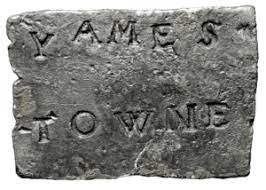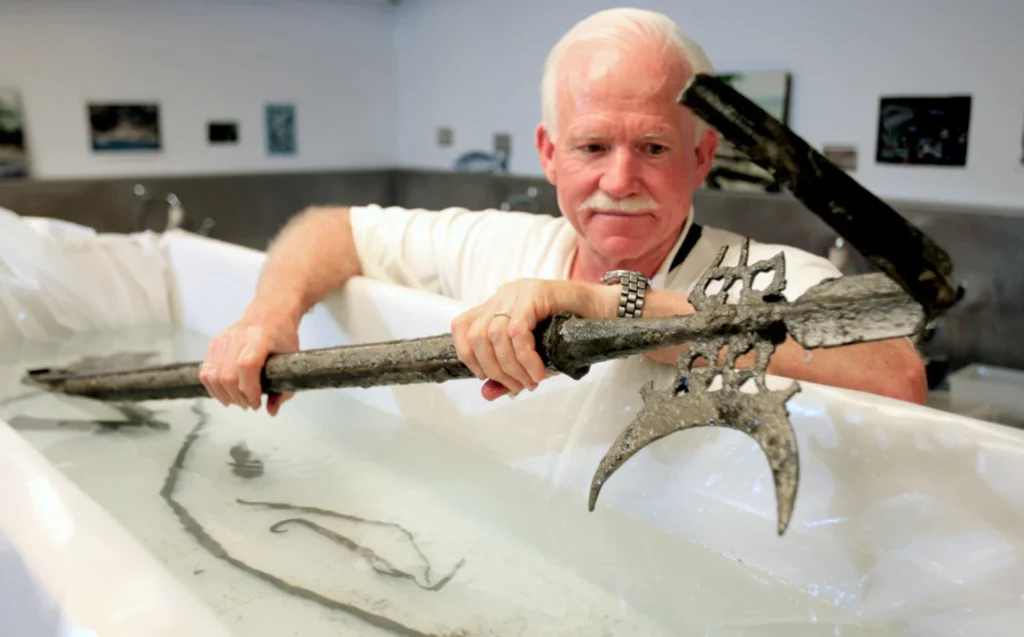
Artifacts Explained
In the world of historical study, artifacts act as valuable keys to unlocking the secrets of bygone times. Specifically for Jamestown, these relics provide intriguing data into the lives of the earliest settlers in the Americas. Whether it’s the simplistic tools fashioned from available materials, the imported European goods, or personal items from the town’s inhabitants, each artifact has a tale to narrate.
Understandably, these antiquities might seem ordinary or insignificant at first, yet, through the lens of an archaeologist, they come alive, painting a vibrant picture of Jamestown’s socio-economic structure, dietary habits, cultural assimilation, and more. Comprehending these artifacts is akin to reading a living history book, where instead of written texts, it’s the silent antiquities that whisper stories of survival, struggle, and human spirit across centuries. In this section, we aim to delve further into these fascinating objects of study, shedding light on their origin, usage, and significance wonderfully encapsulated in the fabric of the Jamestown settlement.
Relevance of Jamestown Artifacts
The significance and meaning that Jamestown artifacts hold are multi-fold. They primarily help shed light on early American history—not just through an academic lens but also through a cultural and anthropological perspective. Being the first permanent English settlement in America, every artifact excavated from Jamestown adds a new piece to the settlement’s historical narrative. They bear testament to the struggles, triumphs, and daily lives of the early settlers.
Moreover, these artifacts are a source of understanding for archaeologists and historians, providing a tangible connection to the past. They allow us to understand the interplay between the European settlers and Native American populations, notably revealing trade patterns, living conditions, and conflicts through the materials left behind. These relics, thus, serve as an integral part of our overall understanding of American history, marking the inception of what would eventually become a new nation.
The Discovery of Jamestown Artifacts
Earliest Discoveries
One of the significant turning points in the study of America’s earliest English settlers was the unearthing of artifacts from the historic site of Jamestown. Beginning in 1994, a series of excavations led by the Preservation Virginia project shed profound light on the lives of the early Jamestown colonists, providing tangible evidence of their struggle for survival and adaptation.

Priceless artifacts dating back to the early 17th century were found, including English and Native American weaponry, implements related to shipbuilding, and domestic items. The discovery of these objects, some in surprisingly good condition, has offered essential clues into the conditions faced by our earliest English ancestors, punctuating the historical narrative with vivid reminders of the challenges and triumphs they experienced. This finding marked the beginning of rigorous, ongoing research that continues to yield fresh insights into the shaping of modern America.
Excavation Sites
Throughout the years, numerous locations have been identified and excavated, yielding substantial proof to construct the historical narrative of Jamestown. These sites, which span across the original fort and modern Jamestown, have released uncountable amounts of relics that provide insight into the lives of early settlers. One of the most noteworthy locations is the 1607 James Fort site, excavated by the Jamestown Rediscovery team.

By unearthing structures like wells, barracks, and storage pits, archaeologists have recovered over two million artifacts, including weapons, tools, pottery, and personal items such as beads and coins. Excavation also extended to peripheral areas of the main colony, burials at the church, and even underwater, revealing the wreckage of vessels possibly used during the settlement. Each site has its own unique story, framed by the artifacts found within its grounds, painting a vivid collective image of 17th-century English Jamestown society.
Significance of Jamestown Artifacts
Historical Impact
The artifacts unearthed in Jamestown not only enhance our understanding of early American history but also offer a deep insight into the life, culture, and activities of the first permanent English settlers. These relics provide vital clues about how these early inhabitants interacted with the indigenous tribes, survived harsh conditions, and evolved their lifestyle over time.
They reflect the struggles and triumphs of the establishment of an English footprint, demonstrating the settlers’ sheer willpower and adaptability. Therefore, the relics significantly contribute to the interpretation of the socio-cultural and economic dimensions of historical narratives, reconstructing a vivid image of the past. With each artifact uncovered, we get a unique perspective on the formation of modern America, emphasizing their unmistakable significance in historical studies.
Social and Cultural Insights
The Jamestown artifacts provide invaluable insights into the social and cultural aspects of the 17th-century English settlers and Native American tribes they encountered. Each artifact, whether a tool, weapon, or piece of jewelry, narrates a story of the way of life, social structure, and techniques of that time. Tools and utensils give a glimpse of their daily activities and jobs, reflecting the settlers’ resilience and innovativeness in surviving in a new land.
Weapons exhibit the looming conflicts and alliances forged with the native tribes. Personal items like jewelry or clothing accessories reveal the aesthetics, status symbols, and social hierarchies that existed within the community. These artifacts chronicle a pivotal period in American history, enlightening curious minds about the intricate complexities of social and cultural relationships in early colonial life in Jamestown and their implications for the present-day USA.
Notable Jamestown Artifacts
Artifacts
Descriptions and Significations

One of the prominent Jamestown artifacts is the Iron Helmet, believed to be among the first pieces of protective gear brought by English settlers. It’s intricately forged curved design and nose guard reflect the craftsmanship of European ironworkers of the time. It signifies the settlers’ anticipation of possible confrontations and their preparedness for the unknown.
Another significant find is a silver box consisting of various religious relics, including human bones, shards of stained glass, and a piece of paper with verses from Psalms. This spiritual cache is evidence of religious practices among the settlers and their struggle to maintain faith during tough times. The discovery of various native American artifacts, such as bone carvings, pottery shards, and arrowheads, near the English settlement implies a probable interaction between the two cultures. These esteemed discoveries not only provide tangible remnants of a bygone era, but they also offer invaluable insights into the lives of Jamestown’s early inhabitants.
Comparison with Modern-Day Items
In assessing the intricacies of artifacts from the historical Jamestown settlement, it’s intriguing to draw parallels with contemporary commodities. Pottery fragments, for instance, bear a resemblance to our modern ceramics but depict the unique aesthetics and functionality of their time. The tools unearthed, while primitive in comparison to today’s technology, delineate the inventiveness and adaptability of the inhabitants.

Interestingly, glass beads, viewed as significant trade items during the era, reflect the enduring human affinity for decorative accessories, akin to our present-day jewelry. Tobacco pipes, one of the most common finds, still echo in the framework of certain contemporary smoking apparatuses. The correlations drawn educate us about the transformation of human life over centuries.
Preservation and Display of Jamestown Artifacts
Museums and Collections
Several institutions and establishments have undertaken the critical task of preserving and showcasing the remarkable pieces unearthed from Jamestown. The renowned Jamestown Rediscovery Foundation preserves a significant collection, documenting the town’s establishment, progress, and struggle for survival. The foundation not only retains these artifacts but also employs state-of-the-art preservation techniques to maintain their original form and information.
Additionally, the National Museum of Natural History, based in Washington, D.C., holds a notable Jamestown collection that narrates the story of early settlers through finely preserved relics and meticulously detailed exhibitions. Furthermore, Virtual Jamestown’s digital archive provides an interactive platform for global audiences to explore these fascinating historical treasures online. These entities serve as the repositories of Jamestown history, playing an invaluable role in bringing the past to the present and further enriching our understanding of early American history.
Preservation Techniques
The meticulous process of conserving Jamestown artifacts involves a multitude of specialized techniques. Initially, once an artifact is discovered, it is carefully cleaned to remove any soil or debris. The cleaning process varies based on the material from which the artifact is made. Often, a soft brush is used for delicate items, while slightly more abrasive methods can be used for sturdier materials. After cleaning, the artifacts are stabilized to prevent any further deterioration.
This could involve treatments like deacidification for paper artifacts or controlled drying to prevent the warping of wooden items. For metal artifacts susceptible to corrosion, electrolytic reduction or chemical treatments are applied. Highly sustained artifacts might require reconstruction, which is a meticulous process carried out by skilled conservators. Lastly, the preserved artifacts are stored under optimal conditions with controlled temperature and humidity levels. All these efforts are key to ensuring the long-term preservation of these historical treasures, allowing future generations to appreciate the rich history of Jamestown.
Controversies Surrounding Jamestown Artifacts
Ownership Disputes
The journey of Jamestown artifacts has not been without its fair share of controversy, particularly when it pertains to the issue of ownership. Numerous legal battles have escalated over the years, featuring collectors, archaeologists, and tribal members, each claiming rights over these historical treasures. One prominent example of this involved a private collector who purchased a significant portion of these artifacts and later resorted to the courts when requests for their return arose.
Native American tribes also argue for their inherit rights to these artifacts, asserting connections to their ancestral heritage. These disputes emphasize the significance of these artifacts as invaluable historical icons as well as the complex implications of determining rightful ownership. These debates continue, complicating the preservation and understanding of Jamestown’s intriguing past.
Authenticity Discussions
The validity of some of the artifacts discovered in Jamestown has generated a significant amount of debate among historians and archaeologists. While a good number of these artifacts have been universally accepted as genuinely associated with the historic Jamestown colony, others have been questioned and remain the subject of ongoing discussions.
The main area of contention involves determining the origin and age of these objects. Experts disagree on whether some items were indeed produced or used by the original settlers or if they are actually later additions, potentially from the 18th or 19th centuries. Artifacts connected to the native Powhatan people have also spurred controversy, with debates over their acquisition and whether they shed accurate light on indigenous culture and relations with the settlers. This persistent discourse highlights the vital necessity of rigorous scientific testing and archaeological analysis, as well as the importance of context and careful interpretation, in validating the authenticity of items tied to Jamestown’s rich history.
Conclusion
The Continuing Importance of Jamestown Artifacts
In wrapping up, the enduring significance of Jamestown artifacts cannot be overstated. These invaluable relics serve as tangible connections to our past, elucidating the early moments of North American colonial history. They provide us with a deeper understanding of the arduous lifestyle, culture, and survival strategies of the settlers, revealing historical events that might have otherwise been consigned to oblivion.
Furthermore, they play an instrumental role in stimulating educational and thoughtful discourse about the complexity of Jamestown’s history. Thus, the ongoing investigation and preservation of these artifacts are essential, ensuring that they remain a continuously illuminated educational and cultural resource for future generations.
Future Perspectives on Jamestown Artifact Findings
There is remarkable potential for the analysis of Jamestown artifacts to yield deeper insights into the foundations of early American history. As technology evolves, it becomes possible to examine these artifacts more comprehensively. Emerging techniques in archeology, such as digital reconstruction or isotope analysis, allow for a more detailed understanding, extending beyond the physical appearance of the artifacts.
The scrutiny of these relics, infused with stories of the past and profound historical significance, may continue to reveal more about the lives, cultures, and interactions of the first English settlers. Considering this, the study of Jamestown artifacts promises to remain a vibrant, illuminating field that will further refine our understanding of the birth of a new society in America. Furthermore, these artifacts could serve as a reminder of our past and potential lessons for future generations, contributing significantly to the enrichment of our heritage.



